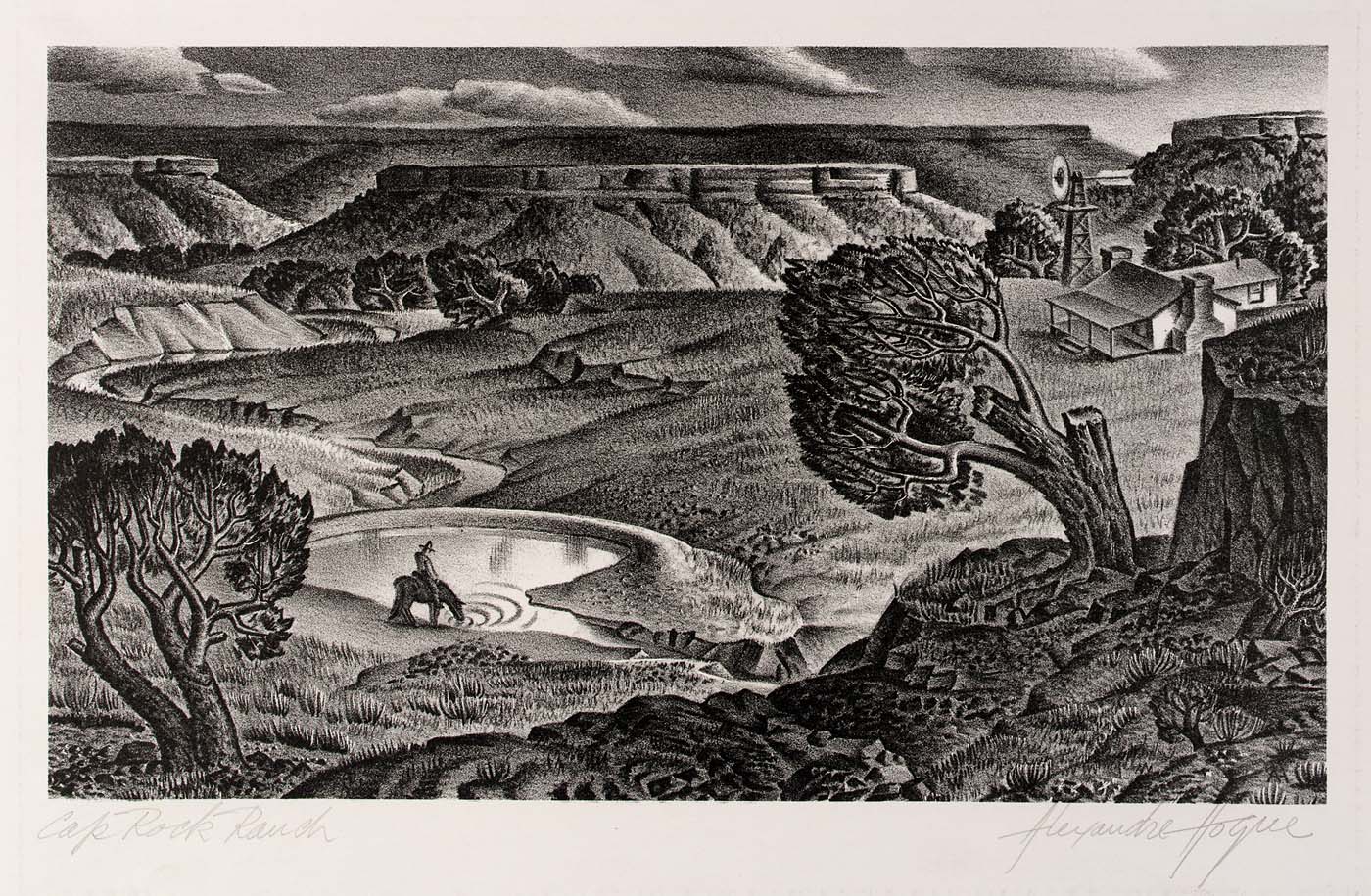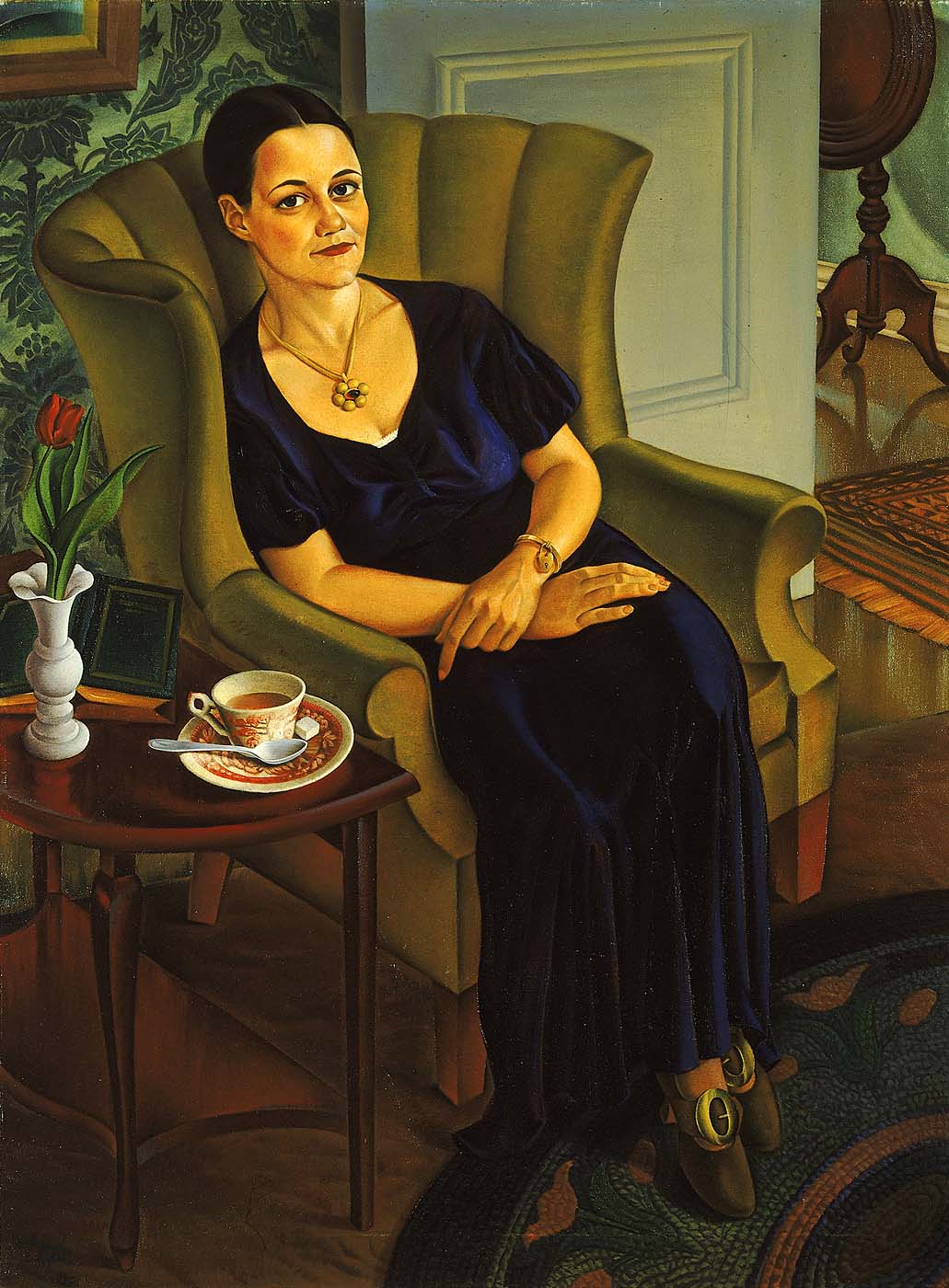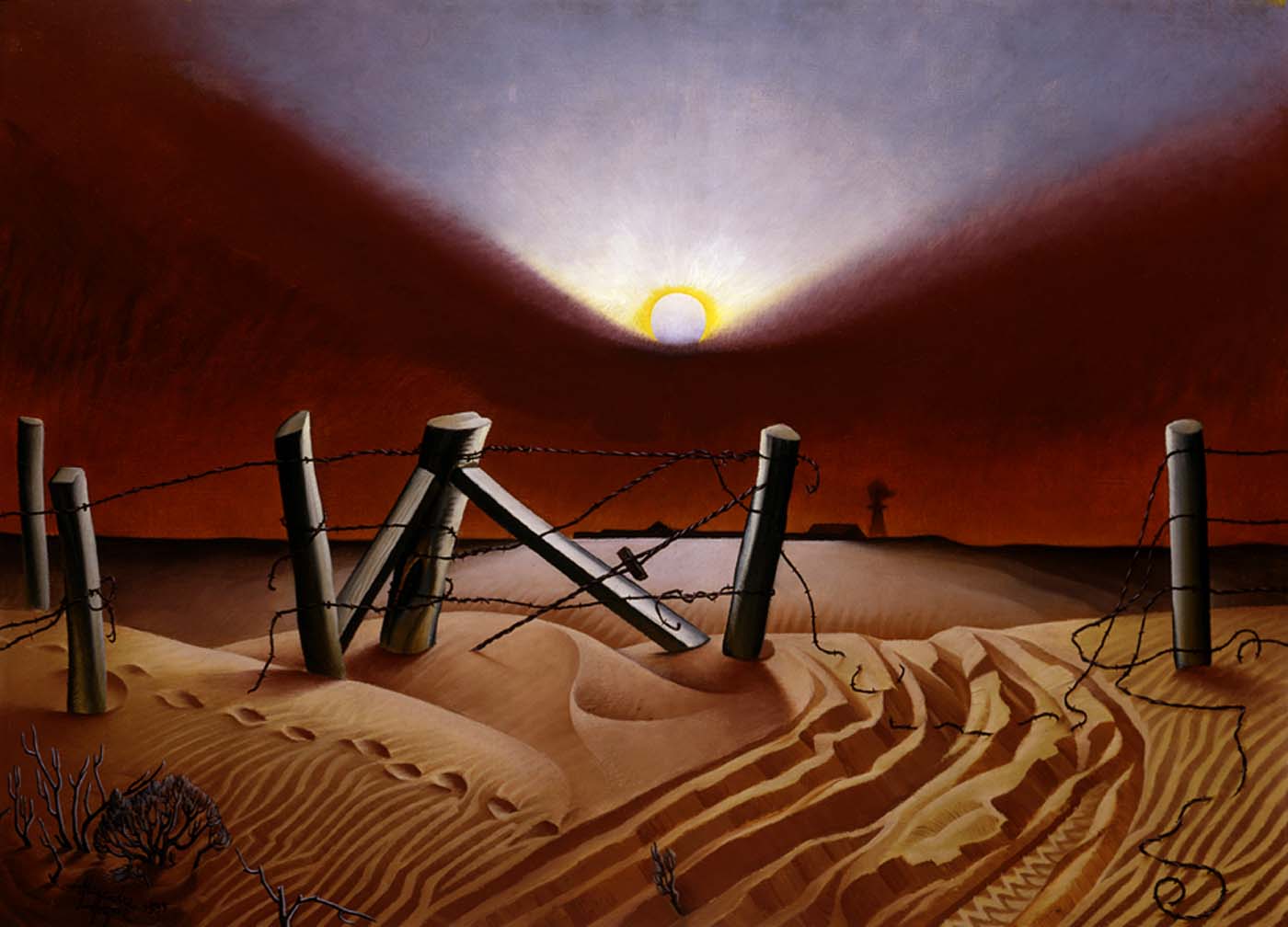Alexandre Hogue
Painter, printmaker. Leaving his boyhood home in Texas, Hogue began his formal art education at the College of Art and Design in Minneapolis. In 1921 he moved to New York, where he lived and worked for four years, returning to Texas during the summers to paint. He eventually settled in Dallas. Starting in 1926, Hogue began making long visits to Taos, which he continued until 1942, forming close friendships with Ernest Blumenschein, W. Herbert Dunton, Joseph Imhof, Victor Higgins, Emil Bisttram, and others who became valuable mentors and advisers. Hogue remains best known for his Dust Bowl scenes of the 1930s, but during his Taos visits, he became deeply interested in the Pueblos, their spiritual concerns, and their land ethic. The latter reinforced his own investigation of the southwestern environment, which continued in more abstract and metaphysical terms through the next four decades.
References
Wilbanks, Elsie Montgomery. Art on the Texas Plains: The Story of Regional Art and the South Plains Art Guild. Lubbock, Tex.: South Plains Art Guild, 1959.
DeLong, Lea Rosson. Nature's Forms/Nature's Forces: The Art of Alexandre Hogue. Norman: University of Oklahoma Press and Philbrook Art Center, 1984.
Stewart, Rick. Lone Star Regionalism: The Dallas Nine and Their Circle, pp. 168–72. Dallas: Dallas Museum of Art, 1985.
Charles Eldredge, Julie Schimmel, and William H. Truettner Art in New Mexico, 1900–1945: Paths to Taos and Santa Fe (Washington, DC: National Museum of American Art, Smithsonian Institution, 1986









































